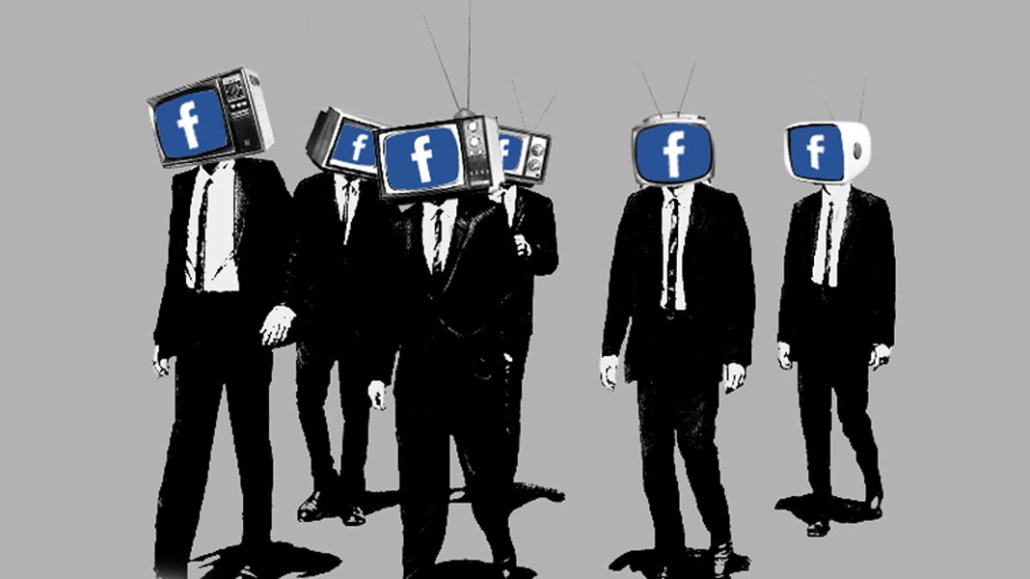Facebook pitches brand-safe video ad buys for $750,000, but lack of control irks buyers

With advertisers clamoring for uncontroversial environments, Facebook is pitching a brand-safe program to advertisers, but the black-box nature of the proposal has some ad buyers balking.
Facebook is offering the chance to buy ads against what it considers its most brand-safe videos, according to four agency executives that have been briefed on the pitch. The company is asking advertisers to commit to spend $750,000 over three months, at $250,000 a month, to participate in the program, said two execs. That amount of money is considered to be a bargain for brand-safe video inventory on a major platform like Facebook, but there are aspects of the experiment that undercut its value to ad buyers.
Ad buyers that have been pitched on the deal said Facebook is giving them limited control over where their ads would appear and that they’re leery of trusting Facebook to determine what videos are brand-safe or not.
Facebook’s program seems to parallel Google’s Google Preferred program that packages YouTube’s top channels into a separate bundle, though how brand-friendly that bundle is remains an open question. For now, Facebook’s program is being described as a test, but it comes in anticipation of Facebook letting advertisers only buy ads to run before or during videos in its YouTube-rivaling Watch hub. The test includes but is not limited to inventory in Facebook’s dedicated video section but also spans videos running elsewhere on Facebook. The company is characterizing this inventory to advertisers as its “best, brand-safe inventory,” as one agency exec put it.
A Facebook spokesperson declined to comment.
Unlike the regular ads Facebook attaches to videos as mid-rolls or, more recently, pre-rolls, advertisers in the test can’t target their ads based on categories such as viewers’ interests, locations or gender. Instead the ads will only be broadly targeted to viewers 18 years old and older, according to the agency execs. Facebook will only bill advertisers participating in the test for ad impressions delivered to viewers in that demographic group as measured by Nielsen, according to one of the agency execs and another person familiar with the matter.
Further frustrating ad buyers, Facebook will not allow advertisers to specify which publishers’ videos they do or not want their ads to appear against, the execs said. That lack of control had led to advertiser pushback against Watch as well as Facebook’s broader pre-roll and mid-roll inventory and its ad network business.
“For our clients, I pretty much told my team we’re not doing any in-stream video because of brand-safety [concerns],” said one agency executive.
Facebook has begun to try to address those concerns, if slowly.
Last year, the company said that by the end of 2017 it would provide all advertisers with lists of which publishers’ videos might carry their ads before the spots were bought, but those pre-campaign placement reports have only been made available to brands buying ads directly from Facebook. Facebook also said last year that it would give advertisers lists of which publishers’ videos did in fact carry their ads, but those reports have also been delayed and are expected to be made available to all advertisers buying its ads directly by the middle of 2018.
More in Media

Meta AI rolls out several enhancements across apps and websites with its newest Llama 3
Meta AI, which first debuted in September, also got a number of updates including ways to search for real-time information through integrations with Google and Bing.

Walmart rolls out a self-serve, supplier-driven insights connector
The retail giant paired its insights unit Luminate with Walmart Connect to help suppliers optimize for customer consumption, just in time for the holidays, explained the company’s CRO Seth Dallaire.

Research Briefing: BuzzFeed pivots business to AI media and tech as publishers increase use of AI
In this week’s Digiday+ Research Briefing, we examine BuzzFeed’s plans to pivot the business to an AI-driven tech and media company, how marketers’ use of X and ad spending has dropped dramatically, and how agency executives are fed up with Meta’s ad platform bugs and overcharges, as seen in recent data from Digiday+ Research.






